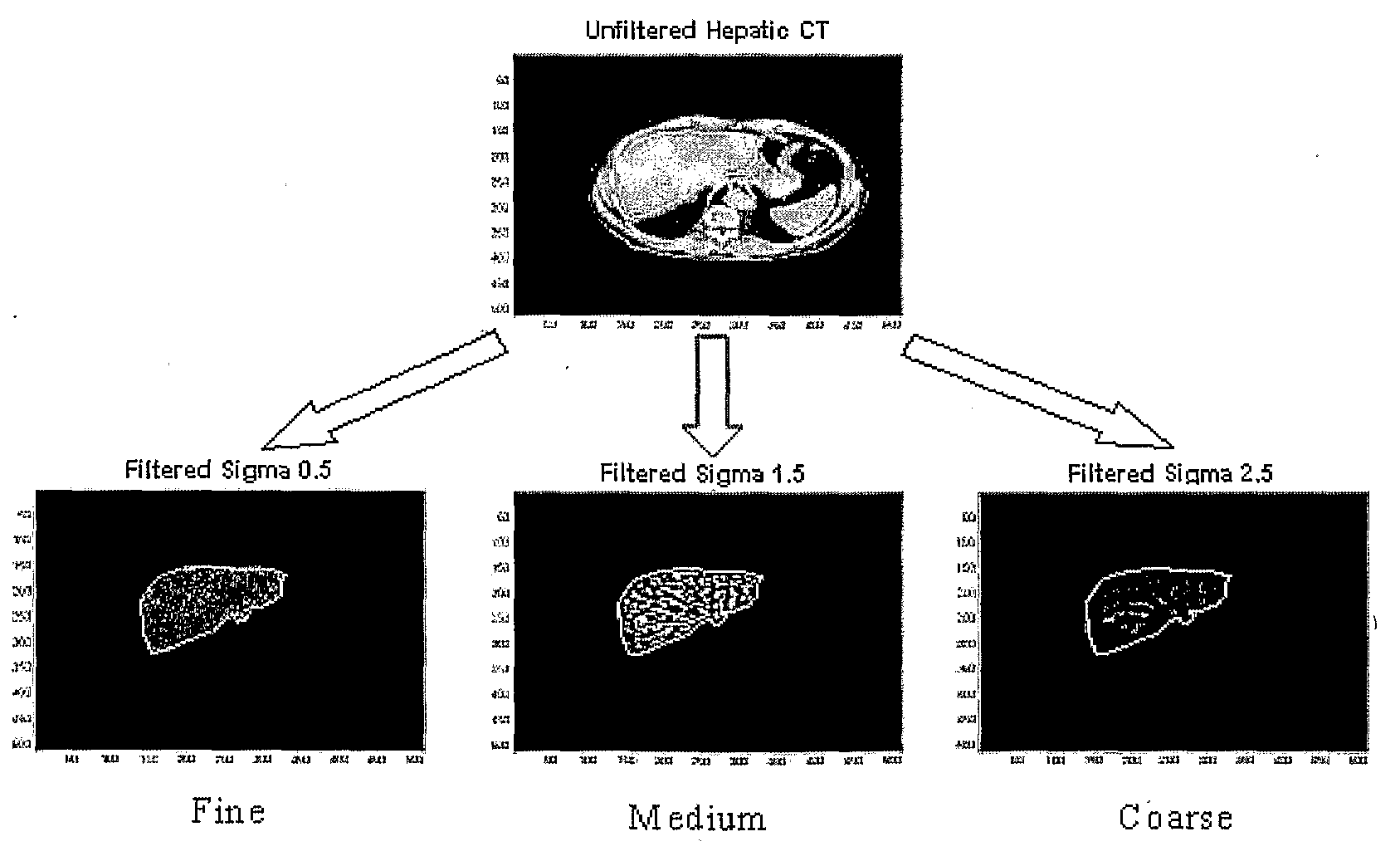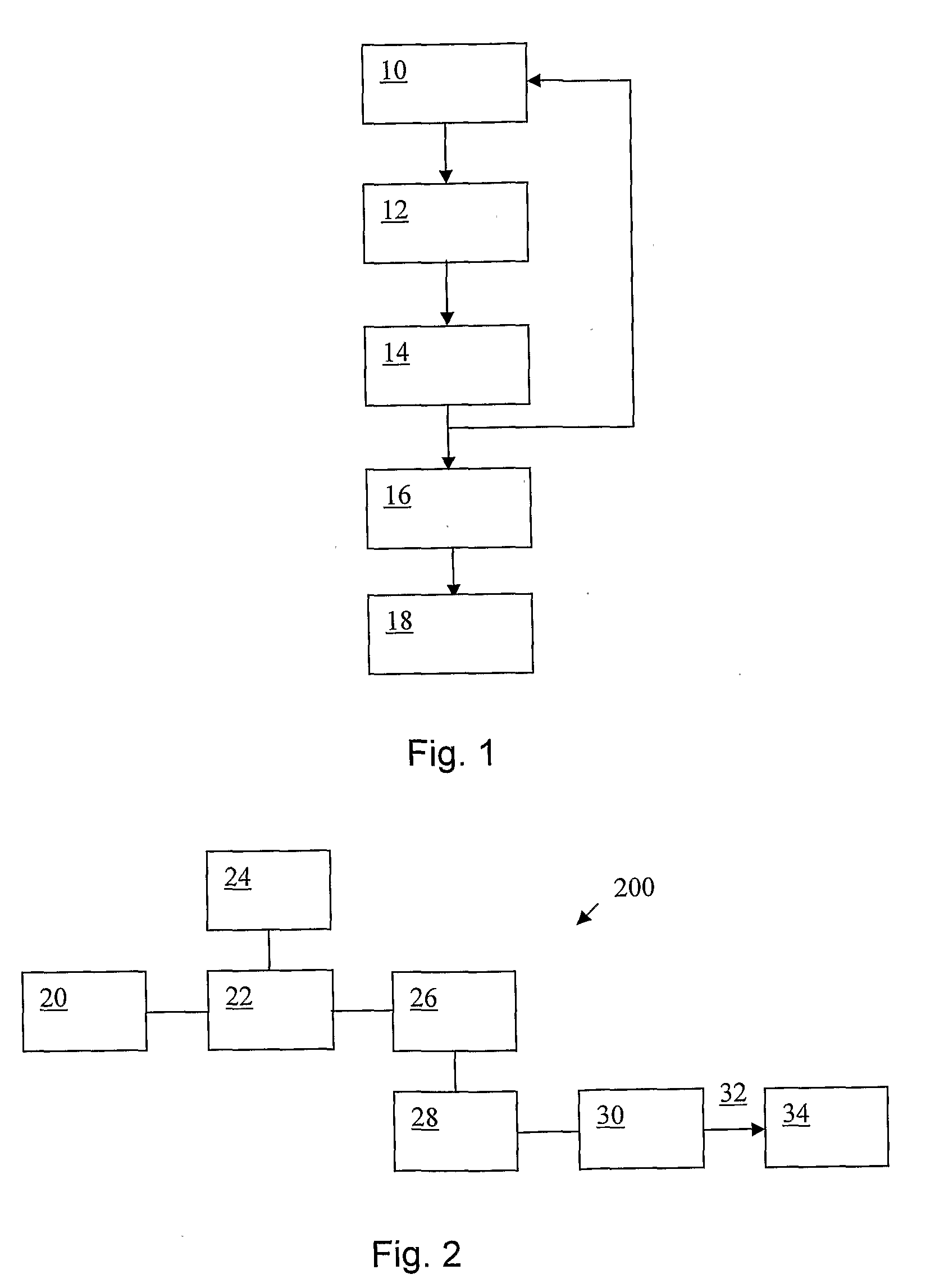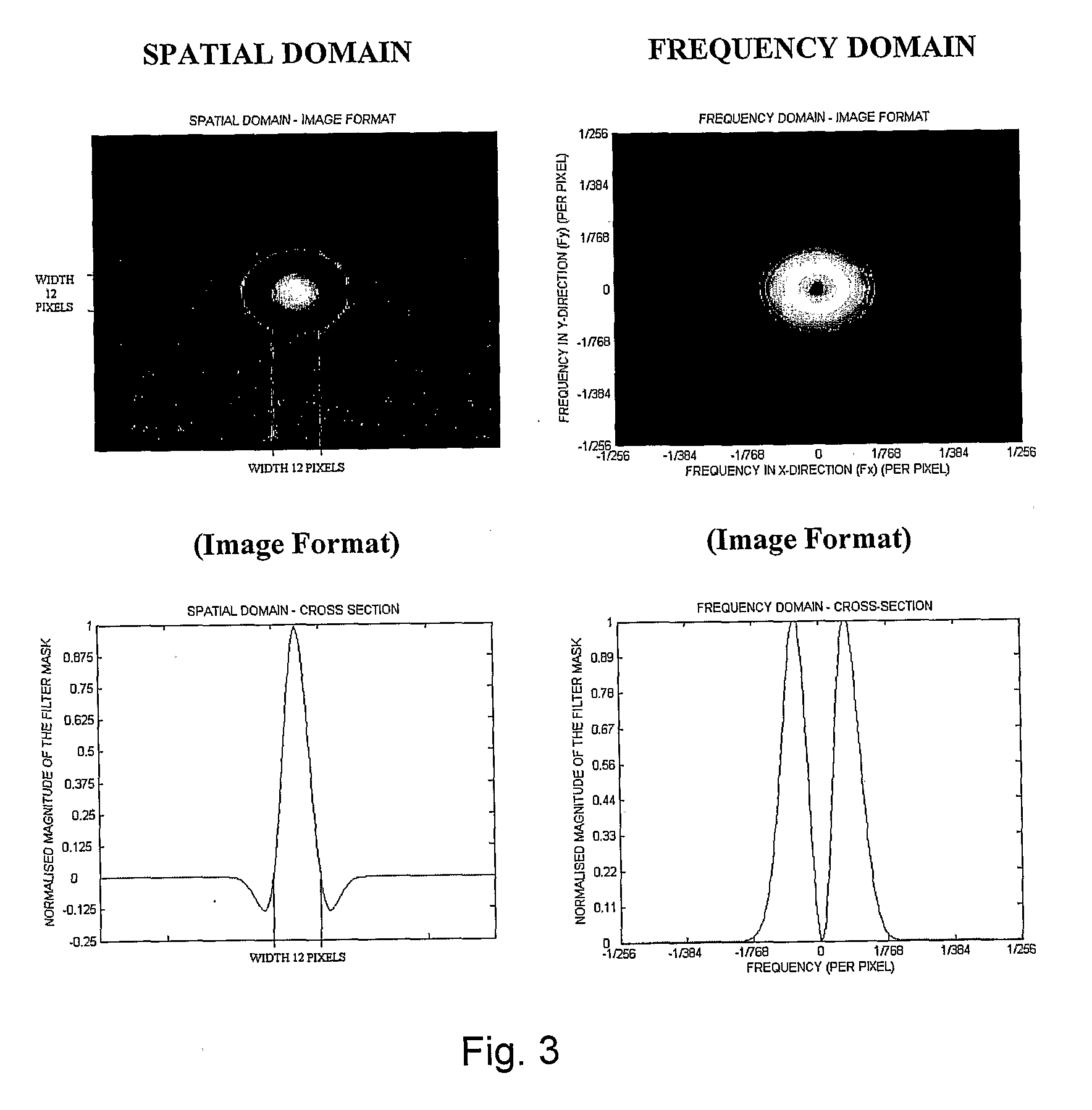Method, apparatus and computer program for analysing medical image data
a technology of image data and computer program, applied in the field of image analysis, can solve the problems of less well developed, more complex and difficult to distinguish diagnostic patient groups from visually normal areas of the liver, and the use of computer analysis to characterise rather than detect mammographic abnormalities, etc., and achieves the effect of easy tuning and easy implementation
- Summary
- Abstract
- Description
- Claims
- Application Information
AI Technical Summary
Benefits of technology
Problems solved by technology
Method used
Image
Examples
Embodiment Construction
[0043]Referring to FIG. 1, the method of analysing medical image data commences at step 10 by selecting the bandwidth of a filter. At step 12 the image data is filtered by the filter employing the selected bandwidth. At step 14 a texture parameter is determined from the filtered data. Flow then returns to step 10 where a different bandwidth is selected and then at step 12 the image data is filtered by the filter employing the different bandwidth, and then at step 14 a texture parameter is determined from the data filtered using different bandwidth. Steps 10, 12 and 14 may be repeated any desired number of times. For example, three different bandwidths may be used to provide fine, medium and coarse filtering and corresponding fine, medium and coarse texture parameters. At step 16 a ratio is calculated of two of the texture parameters corresponding to different filter bandwidths, and optionally additional ratios may be calculated using different pairs of the texture parameters. The ra...
PUM
 Login to View More
Login to View More Abstract
Description
Claims
Application Information
 Login to View More
Login to View More - R&D
- Intellectual Property
- Life Sciences
- Materials
- Tech Scout
- Unparalleled Data Quality
- Higher Quality Content
- 60% Fewer Hallucinations
Browse by: Latest US Patents, China's latest patents, Technical Efficacy Thesaurus, Application Domain, Technology Topic, Popular Technical Reports.
© 2025 PatSnap. All rights reserved.Legal|Privacy policy|Modern Slavery Act Transparency Statement|Sitemap|About US| Contact US: help@patsnap.com



